Series of projects connecting new growth poles
The Ministry of Construction has just sent a document to the Ho Chi Minh City National Assembly Delegation responding to the recommendations of Ho Chi Minh City voters sent after the 9th session of the 15th National Assembly regarding the Cai Mep - Thi Vai port cluster projects, the Can Gio - Vung Tau sea bridge project and the high-speed railway connecting Ho Chi Minh City.
According to the petition, voters highly appreciate the policy of merging Binh Duong , Ba Ria-Vung Tau with Ho Chi Minh City. This is a combination of strengths, creating momentum for regional development, especially in the role of the economic, financial and technological center of the whole country. To continue promoting the strengths of the old Ba Ria-Vung Tau area in terms of tourism potential and seaports, voters recommend that the Government soon invest in developing Cai Mep - Thi Vai port into an international transit port. At the same time, build a bridge connecting Can Gio - Vung Tau, a high-speed railway connecting Ho Chi Minh City - Ba Ria - Binh Duong to promote the strength of traffic connection, serving import-export and logistics.
According to the Ministry of Construction, the Can Gio - Vung Tau bridge construction project is within the scope of Ho Chi Minh City after the merger, not part of the national highway and expressway system managed by the Ministry. Therefore, the Ministry of Construction requested the Ho Chi Minh City National Assembly Delegation to consult with the Ho Chi Minh City People's Committee to study and update the Can Gio - Vung Tau bridge into the city's planning after the merger and preside over the organization of investment implementation according to its authority.
Investment plan for the coastal route connecting Ho Chi Minh City with Ba Ria-Vung Tau via Can Gio sea bridge (according to the old administrative boundary)
PHOTO: HO CHI MINH CITY DEPARTMENT OF CONSTRUCTION
Regarding the railway network, according to the 2021 - 2030 Planning period, with a vision to 2050, in this area, there is a planning for a high-speed railway line on the North - South axis (this project has been approved by the National Assembly in principle for investment). In addition, there is the Ho Chi Minh City - Loc Ninh railway line, Bien Hoa - Vung Tau railway line and Thu Thiem - Long Thanh railway line... Currently, the Ministry of Construction has assigned the Vietnam Railway Authority to develop a planning for railway lines and stations in the Ho Chi Minh City hub area and review and adjust the planning. At the same time, the Railway Project Management Board is organizing the preparation of a feasibility study report for the high-speed railway on the North - South axis and a number of railway projects. Therefore, the Ministry of Construction requested the Ho Chi Minh City People's Committee to direct relevant agencies to closely coordinate with units during the implementation process to ensure consistency and unity between central and local planning.
Ho Chi Minh City is also planning to reclaim more than 325 hectares of land, preparing compensation costs of nearly 7,500 billion VND to build a 48.5 km metro line connecting the old District 7 area to Can Gio. The project is being researched and invested by VinSpeed, a company under Vingroup. In addition to the metro line, Can Gio is also planning a 40 m wide road connecting from the 30.4 roundabout to the center of the coastal urban area and the Can Gio bridge project, after many years of waiting, is also urgently completing legal procedures and submitting to the competent authority for approval of the investment policy this year.
Before the merger, localities, including Ho Chi Minh City, were also studying the investment in the 941 km long southern coastal route, passing through 9 (old) provinces and cities: Ba Ria-Vung Tau, Ho Chi Minh City, Tien Giang, Ben Tre, Tra Vinh, Soc Trang, Bac Lieu, Ca Mau and Kien Giang. This route is identified as an important traffic axis, connecting Ho Chi Minh City with the Mekong Delta region. For Ho Chi Minh City alone, the Department of Construction has identified the coastal route starting from National Highway 50 (Dong Thap), crossing the Soai Rap River to Can Gio (Ho Chi Minh City), connecting with Can Gio international transit port, Phuoc An port and extending to Ben Luc - Long Thanh expressway (Dong Nai). Localities are studying feasible options, including the first phase of investing in the main route and the road connecting to the Ba Ria-Vung Tau coastal road via the Can Gio sea-crossing bridge and the first phase of investing in the main route and the road to Cai Mep port.
Shorten the distance from Can Gio to Vung Tau by 9 times
Not only considering connecting the city center with Can Gio, Ho Chi Minh City is currently full of projects connecting to Ba Ria-Vung Tau via Cai Mep - Thi Vai port, forming a new sea-oriented corridor to comprehensively develop the marine economic ecosystem in a new look.
In fact, many years ago, the Ho Chi Minh City Real Estate Association (HoREA) proposed the idea of building a sea-crossing bridge connecting Can Gio - Vung Tau and repeatedly sent documents to the Ho Chi Minh City People's Committee to propose adding this project to the general construction plan of Ho Chi Minh City for the period 2021 - 2040, with a vision to 2060. According to HoREA's idea, the bridge will be about 17 km long with a clearance of up to approximately 56 m so that international ships can enter and exit easily. Mr. Le Hoang Chau, Chairman of HoREA, affirmed that the lack of a sea-crossing bridge from Can Gio to Vung Tau would be a huge waste. The bridge will be the "hyphen" to complete the eastern coastal route. Currently, this route starts from Ham Tan (old Binh Thuan) and ends at Ba Ria-Vung Tau (old). Vehicles have to travel a very long distance to reach the core area of Ho Chi Minh City and Binh Duong (old), Dong Nai (from National Highway 51 through the Ho Chi Minh City - Long Thanh - Dau Giay Expressway to reach National Highway 1A). If there is a sea-crossing bridge, from the coastal route in Ba Ria-Vung Tau, Ho Chi Minh City residents can easily travel to the central area via Can Gio.
Can Gio is located right between two important economic zones, Vung Tau and My Tho - the traffic hub of the Mekong Delta region.
PHOTO: NGOC DUONG
Engineer Vu Duc Thang calculated that from My Tho (old, now part of Dong Thap) to Vung Tau, it takes more than 200 km to go around Ben Luc - An Lac - An Suong - Bien Hoa - Vung Tau (old), while taking a shortcut through Can Gio is only 80 km. The transport distance is only 40%, saving 60% of time and transport costs.
Currently, from Can Gio looking across Ganh Rai Bay, you can see Vung Tau, but to get there, you have to go up to Nha Be, through Long Thanh, then down to Ba Ria-Vung Tau. If the sea bridge is built, from Can Gio to Vung Tau will only be 1/9 - 1/10 of the distance. Connecting to the West, from My Tho to Can Gio, you have to go up to An Lac, Nha Be, down to Can Gio. If the shortcut through Go Cong to Can Gio is built, the distance will be reduced to 1/3. From Go Cong, you also have to go up My Loi bridge, through Binh Khanh - Nha Be down to Can Gio. Now, if there is a bridge across Soai Rap river to Can Gio, it will only be 1/4 of the distance.
Therefore, if there is a Vung Tau - Can Gio sea bridge connecting directly to My Tho, it will create a very good effect in closing the belt, reducing travel time from the two poles of Ho Chi Minh City as well as from Ho Chi Minh City to the provinces of the Southwest.
"This shortcut route will ease the pressure on traffic flow on the Ben Luc - Long Thanh beltway and the entire network of Ho Chi Minh City. At the same time, it will reduce the number of vehicles crossing the mangrove forest, contributing to protecting the ecological balance of the environment. A large amount of goods flowing directly through the east - west direction will avoid being concentrated in the north direction, reducing the adverse impact on the green lungs of Ho Chi Minh City and reducing the disadvantages for the mangrove forest, which is a rare natural reserve area of Vietnam. In addition, after being formed, this route will promote the development of the urban and industrial traffic chain of Vung Tau - Can Gio - Go Cong - My Tho, becoming a chain of satellite cities, contributing to the population expansion to the outskirts of Ho Chi Minh City. In the context of Ho Chi Minh City determining to enter the era of advancing to the sea, this project needs to be prioritized for implementation as soon as possible," emphasized engineer Vu Duc Thang.
Can Gio - Cai Mep port cluster will become an international maritime center
In addition to connecting traffic, voters also recommended early investment in developing Cai Mep - Thi Vai port into an international transit port. According to the Ministry of Construction, Cai Mep port area (including Cai Mep Ha and Cai Mep Ha downstream ports) is planned as an international gateway and transit port. The port has a berth for container ships from 6,000 - 24,000 TEU or larger when qualified; general cargo ships, liquid/gas cargo ships up to 150,000 tons or larger, reducing the load in accordance with the conditions of exploiting the maritime route.
To develop Cai Mep wharf area into an international transit port, the Ministry of Construction supports early investment and putting into operation Cai Mep Ha and Cai Mep Ha downstream wharf areas according to the approved detailed seaport planning roadmap. Currently, the Ministry of Finance and Ho Chi Minh City are appraising the investment proposal documents for Cai Mep Ha and Cai Mep Ha downstream wharf areas for approval and submitting to the competent authority for approval of the investment policy.
After the merger, Ho Chi Minh City aims to become a city on par with major cities in the world, leading the digital economy and knowledge economy. To realize this goal, the City People's Committee has determined to focus on implementing many key tasks, notably building the Project "Ho Chi Minh City becomes a major service center with high-class, modern, high-value-added service industries". In particular, developing logistics into a key economic sector associated with Cai Mep - Thi Vai seaport and Can Gio transit port.
Mr. Dinh Xuan Khanh, Director of Logistics Service Center, Saigon Newport Corporation, estimated that the seaport area of Ho Chi Minh City (old) has a customs clearance output of about 7 million TEU/year. The Cai Mep - Thi Vai port cluster area also has a similar output. Thus, after the merger, the customs clearance output of Ho Chi Minh City is about 14 million TEU/year. With the current growth rate of goods, the customs clearance output in Ho Chi Minh City will reach 26.57 million TEU/year by 2030 and is likely to be even higher. Not to mention, the city's seaport logistics service industry still has room for development if it can attract transit goods at sea to current ports, instead of just import and export goods to the port.
For example, Sihanoukville port (Cambodia) can only receive ships under 50,000 tons. Most of the goods from Cambodia that want to be exported still have to be transited through seaports in Singapore, or Laem Chabang port (Thailand), with a very large output of about 2 million TEU/year. Ho Chi Minh City can completely attract these 2 million TEU, because the distance to transport goods from Sihanoukville port to Cai Mep - Thi Vai port cluster and then to the US will be shorter, and the cost will be cheaper than going through Laem Chabang port.
Therefore, Ho Chi Minh City needs to quickly complete the planning of Cai Mep - Thi Vai port into an international transit port, and urgently solve the problem of connecting with Can Gio port in the future as well as connecting seaports, post-port logistics areas with road, waterway and air traffic so as not to miss the opportunity to exploit these "gold mines". Cai Mep - Can Gio port cluster associated with the orientation of building a Free Trade Zone will be a very strong growth driver for Ho Chi Minh City in the coming period.
3,000 billion to build the intersection of Rung Sac road with Ben Luc - Long Thanh expressway
The Ho Chi Minh City Department of Construction has just submitted a document to the City People's Committee on approving the investment policy for the project to build a traffic intersection connecting Ben Luc - Long Thanh Expressway with Rung Sac Road (Binh Khanh Commune, old Can Gio District). According to the proposal, the project will form a different-level intersection connecting the expressway and Rung Sac Road, with connecting branches designed for a speed of 40 km/h.
Particularly on the Ben Luc - Long Thanh expressway, an additional unit will be built to complete the scale of 8 lanes, allowing vehicles to run at a design speed of 100 km/h. Meanwhile, Rung Sac road will be built with 2 two-way tunnels, prioritizing traffic from Rung Sac to Can Gio bridge and vice versa. Each tunnel is about 610 m long, of which the closed tunnel part is 150 m long, the open tunnel part and the retaining walls at both ends of the tunnel are 230 m long; the width of the road surface in the tunnel is 10 m.
The total investment capital of the project is expected to be nearly 3,000 billion VND. According to the plan, the investment policy will be submitted for approval this year, striving to start construction in the second quarter of 2026 and complete in the first quarter of 2028.
Thanhnien.vn
Source: https://thanhnien.vn/noi-can-gio-vung-tau-thanh-hanh-lang-ven-bien-moi-185251003220522665.htm


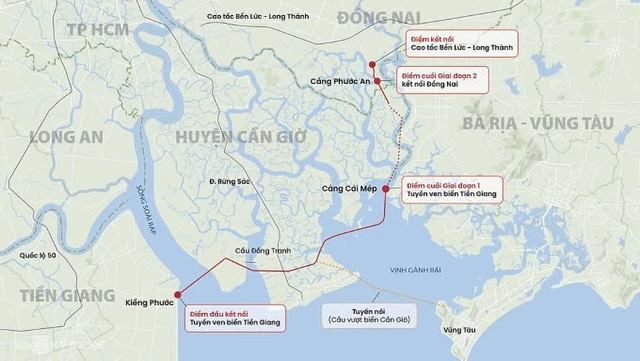
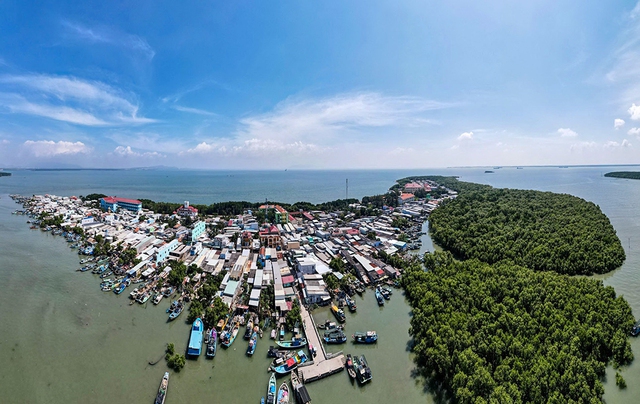


![[Photo] Students of Binh Minh Primary School enjoy the full moon festival, receiving the joys of childhood](https://vphoto.vietnam.vn/thumb/1200x675/vietnam/resource/IMAGE/2025/10/3/8cf8abef22fe4471be400a818912cb85)

![[Infographic] Notable numbers after 3 months of "reorganizing the country"](https://vphoto.vietnam.vn/thumb/1200x675/vietnam/resource/IMAGE/2025/10/4/ce8bb72c722348e09e942d04f0dd9729)

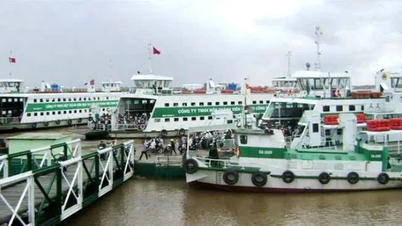




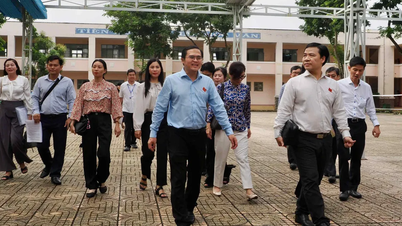
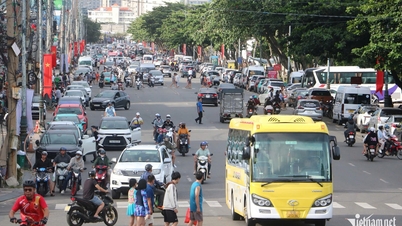

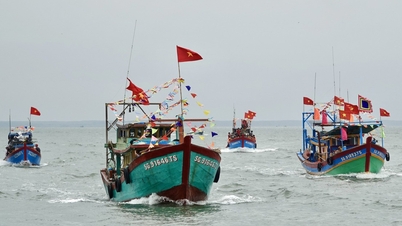


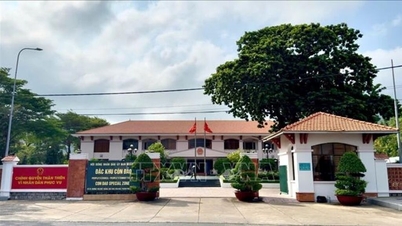
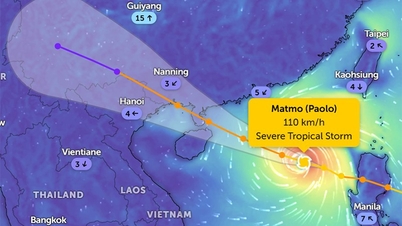


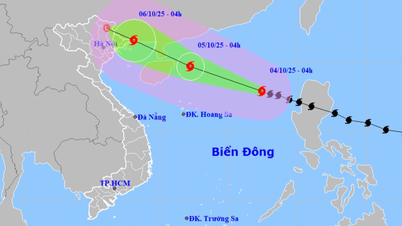






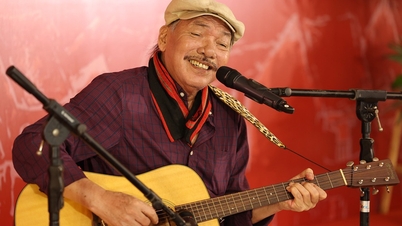
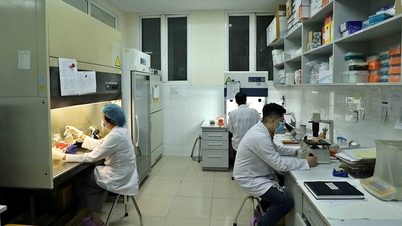
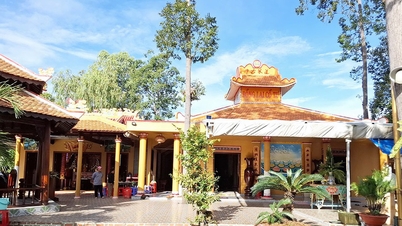



![[Photo] Prime Minister Pham Minh Chinh chairs meeting to deploy overcoming consequences of storm No. 10](https://vphoto.vietnam.vn/thumb/1200x675/vietnam/resource/IMAGE/2025/10/3/544f420dcc844463898fcbef46247d16)
































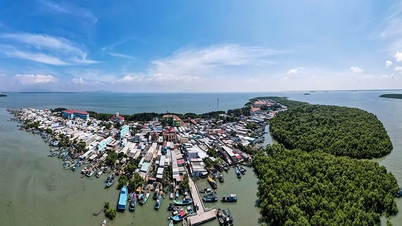
![[Infographic] Notable numbers after 3 months of "reorganizing the country"](https://vphoto.vietnam.vn/thumb/402x226/vietnam/resource/IMAGE/2025/10/4/ce8bb72c722348e09e942d04f0dd9729)
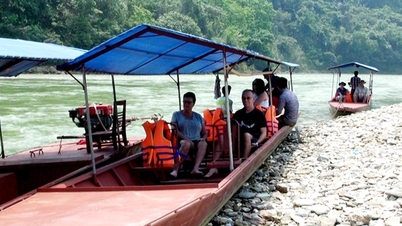








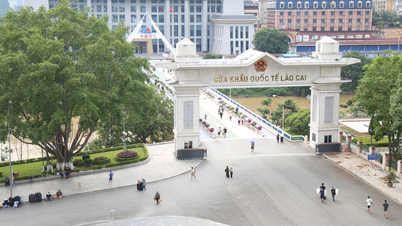


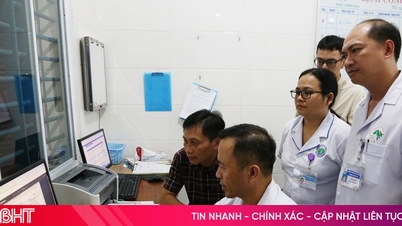

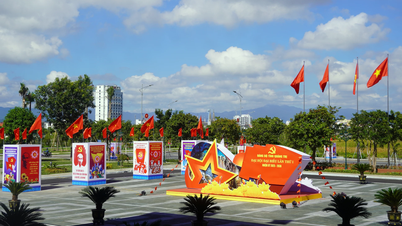

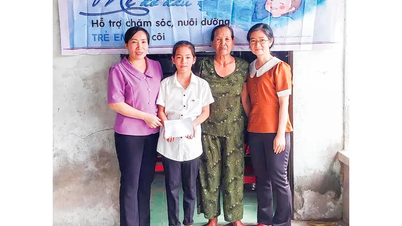













Comment (0)